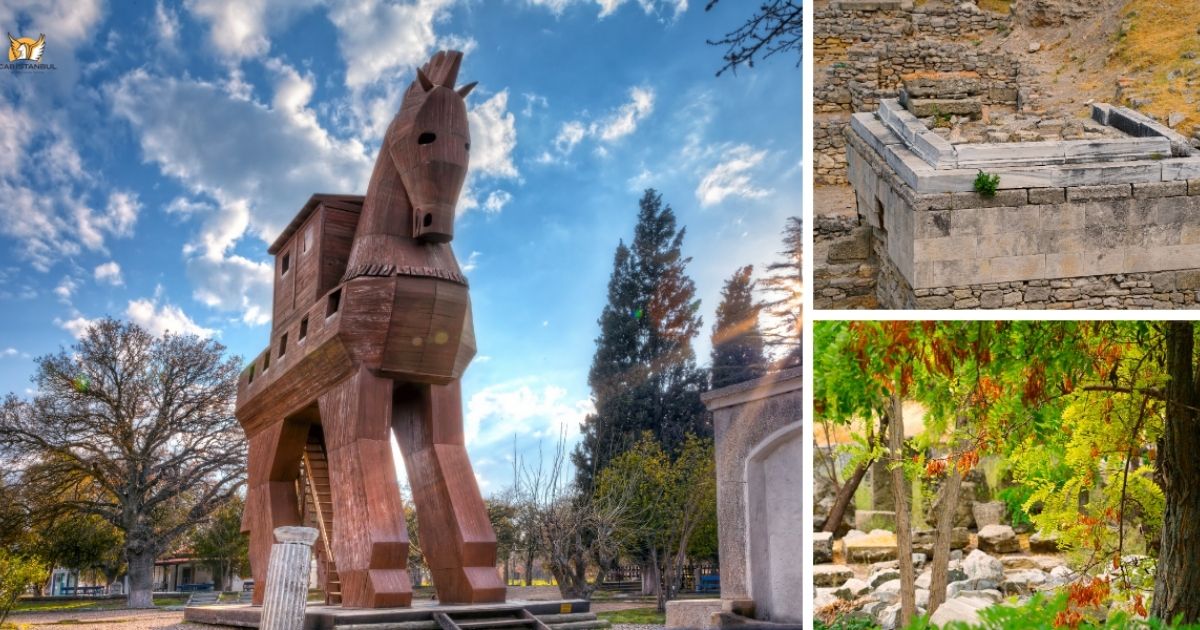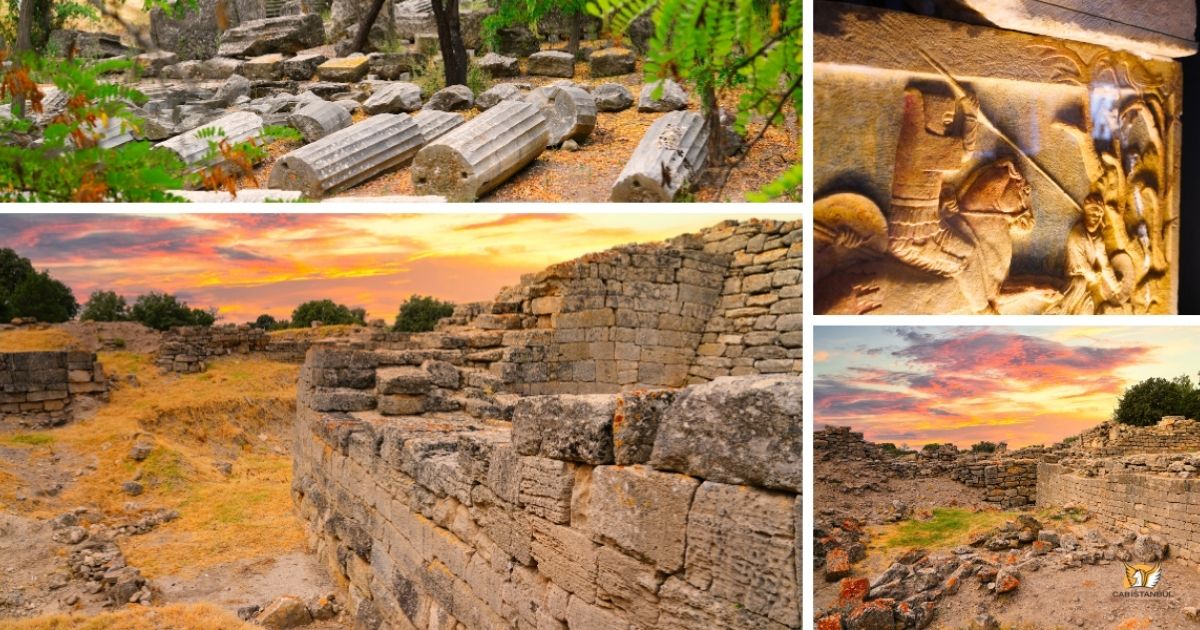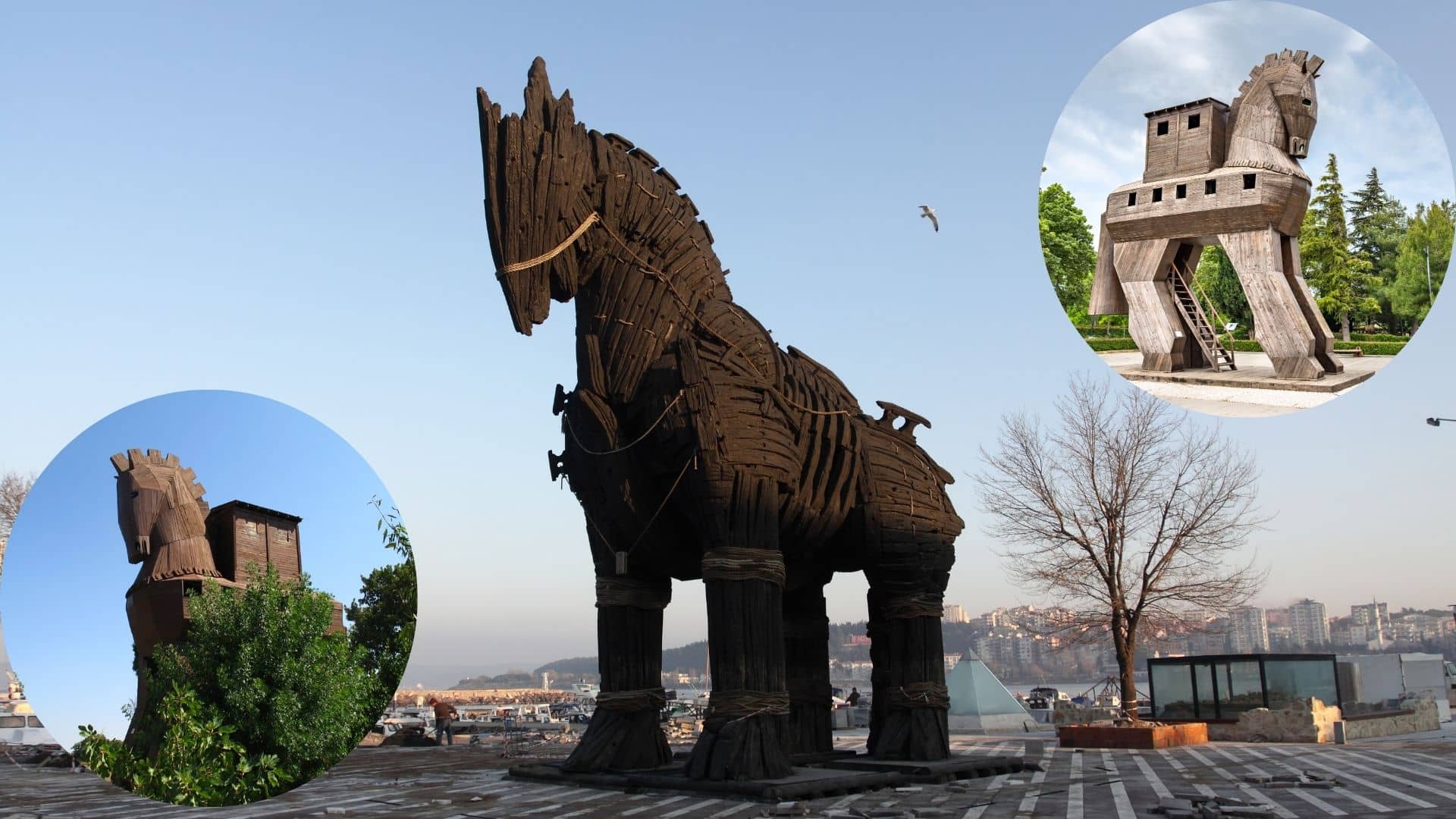Troy Ancient City Turkey
2026-01-16

Archaeological Site Of Troy
Ancient city of Troy, an emblematic site that has captivated historians, archaeologists, and travelers alike. Nestled insouth of Turkey's historic landscape, Troy is not only a symbol of the epic Trojan War but also a testament to the narratives of Homer's Odyssey and the legendary Trojan Horse. This travel guide invites you to embark on a journey through time, exploring the ruins of one of the most famous archaeological sites in the world. Uncover the secrets of the ancient city that has been reborn through nine successive layers of civilization, each telling its own story of conquest, glory, and ruin.
From the breathtaking excavations that reveal the sophisticated urban planning of ancient Troy to the treasures housed within the modern Troy Museum, every step through this historic landscape is a step into a story millennia in the making. Whether you're a history buff, a lover of mythology, or simply in search of an extraordinary travel experience, Troy offers a unique glimpse into the past, where myth and history converge. Join us as we delve into the heart of the Troad, uncovering the mysteries of the Trojan War, the truth behind the Trojan Horse, and the immortal legacy of Homer's epic tales. Welcome to your ultimate guide to the ancient city of Troy, where every corner holds a story waiting to be discovered.
Enhance your journey to the Ancient City of Troy with the effortless comfort provided by Cab Istanbul. Opt for premium car rental service, complete with a professional driver, to ensure a seamless and stress-free experience. Navigate with ease from Istanbul Airport to Çanakkale, immersing yourself in the tranquil ambiance and historical allure that awaits. Click the button below to secure your exclusive transfer service and embark on a trip steeped in ancient wonder and modern luxury.
Ancient Troy Turkey
Homer Book Odyssey
Ancient city of Troy in the scenic foothills of the Kaz Mountains in Çanakkale, the an archaeological tapestry, weaving tales of mythical wars and bygone civilizations. With its foundation deeply rooted in the time of the Hittites, this UNESCO World Heritage Site encompasses nine distinctive layers, each bearing testament to a different epoch and civilization that once thrived on this hallowed ground.
Homer’s Odyssey
Troy’s fame is immortalized by Homer’s epic poems, the Iliad and the Odyssey. The Iliad paints a vivid tableau of the infamous Trojan War, which unfolded on this very terrain. The Odyssey recounts the cunning ploy devised by the Achaean warrior, Odysseus, which brought about Troy’s downfall. This ruse, now famously known as the Trojan Horse, misled the unsuspecting Trojans into ushering their doom within their fortified walls. As the night fell, Achaean warriors concealed within the wooden horse emerged, seizing and setting ablaze the mighty city, marking the end of the decade-long conflict.
During your exploration of these ancient ruins, you might be fortunate enough to witness playful squirrels darting amidst the stones, adding a whimsical charm to your historical adventure. These delightful creatures, seemingly the city’s true inheritors, provide enchanting photo opportunities against the backdrop of time-worn relics.
The Trojan War
Delving into the annals of history, the Trojan War's inception can be traced back to a pivotal moment during the sixth layer of Troy’s historical stratification, spanning from 1750 BC to 1300 BC. The war was kindled by a divine dispute involving Paris, son of Primus, who was entrusted with adjudicating a celestial beauty contest atop the Kaz Mountains. As the triumphant Aphrodite bestowed upon him the world’s most exquisite woman, the stage was set for a legendary conflict aimed at rescuing the abducted queen, culminating in the construction of the ingenious Trojan Horse by Odysseus.
Troy, akin to its contemporaries Ephesus and Miletus, was initially established as a bustling port city south of the Dardanelles. However, over centuries, sediment deposits from the Karmanderes River have gradually distanced the city from the embrace of the sea.
The Trojan Horse
The iconic Trojan Horse, crafted meticulously from wood, stands sentinel at the city's entrance, beckoning visitors into its historical embrace. Although entry to the horse is currently restricted, it remains a potent symbol and a popular subject for photographs. The well-designed path through the city guides visitors through an array of historical highlights, including prominent roads, platforms, and an informative museum, housing various models and photographs of the Trojan Horse. As you commence your journey, the Pithos garden greets you, featuring towering doors and the city's symbolic Eternal Stone of Troy, a mammoth 20-ton granite rock standing steadfast through time.
Ancient Troy Location

Troy Ruins In Turkey
Temple of Athena
The Temple of Athena stands as a prominent testament to the splendid architectural legacy of ancient Troy. Commissioned by Lysimachus, a revered general under Alexander the Great, this venerable structure was erected in 300 AD. Subsequent to its initial construction, the temple underwent extensive renovations under the discerning eyes of Roman Emperor Augustus. The temple not only served as a crucial religious center during its heyday but also played host to significant historical events. It is recorded that Emperor I. Serhas, prior to embarking on the fateful Persian expedition, presented offerings at this sacred edifice. With its well-preserved features, the Temple of Athena continues to command admiration and respect as one of Troy's most remarkable surviving monuments.
The Odeion: A Glimpse into the Past
Venture further into the ancient city and discover the remnants of Roman baths adjacent to the road, their drainage systems still discernible amongst the ruins, with hot water perennially springing forth from the earth. Directly opposite these ancient baths stands the Odeion — a significant architectural relic within Troy's boundaries. The Odeion historically served a dual purpose: hosting assembly meetings and providing a venue for musical performances. Though the Trojan palace has yielded few remains to the present day, the Odeion offers a tangible connection to the past, standing as one of the few structures in Troy that can still be observed and appreciated. Through meticulous studies conducted in the area, large storage spaces for food have been discovered, leading scholars to conclude that these facilities were once part of the palace, strategically used as depots in ancient times.
Trojan Horse

Troy's Enigmatic Past
Unraveling Millennia of History, Famous for its pivotal role in Homer's Iliad, Troy's legacy spans over four millennia, marked by its strategic location at the crossroads between the East and West. This illustrious city, known in Greek as Troia and in Latin as Ilium, was not merely the backdrop for the mythical Trojan War but a real settlement with a deeply layered history, revealed through extensive archaeological digs.
The Archaeological Layers of Troy
Archaeologists have identified no fewer than nine major layers of settlement at Troy, each representing distinct periods of habitation from as early as 3000 BC. These layers showcase the city's evolution, from a small trading settlement to a fortified urban center that played a significant role in the Bronze Age civilization. The most famous period, Troy VII, is widely believed to correspond with the era of the Trojan War, a saga immortalized by Homer.
Troy: A Cultural Intersection
Throughout its long history, Troy served as a cultural and commercial hub, testament to the blend of Anatolian, Greek, and later Roman influences. Its strategic location by the Dardanelles ensured its importance in controlling sea routes, contributing to its wealth and power but also making it a target for conquest.
The Impact of Archaeology
The rediscovery of Troy in the 19th century by Heinrich Schliemann, who was driven by a passion for Homer's epics, marked a significant milestone in archaeology. His excavations, although controversial, unveiled the physical remnants of the city's grandeur, aligning the poetic narratives with tangible evidence. Subsequent archaeological efforts have provided a clearer understanding of Troy's significance in ancient geopolitics and its cultural development.
Troy Today
Presently, the archaeological site of Hisarlik, identified as ancient Troy, offers a window into the past, attracting scholars and tourists alike. The UNESCO World Heritage site encompasses ruins that narrate the city's historical journey, from its legendary gates to the remnants of its majestic walls. The nearby Troy Museum further enriches visitors' experience, housing artifacts that span the city's long history, including the eras beyond the fabled Trojan War.
Troy Museum Çanakkale
Ancient Troy History
Archaeological Excavations at Troy: Immerse yourself in the ongoing archaeological work, discovering new artifacts and structures that continue to surface, providing insights into ancient Trojan life.
Çanakkale Maritime Museum: Explore maritime history, with exhibits featuring ancient and modern vessels, maritime artifacts, and exhibits related to the Gallipoli Campaign.
Wooden Horse on the Troy Site: Pose beside the infamous Wooden Horse replica, a symbol of deception and clever tactics during the Trojan War.
Ancient City Walls: Marvel at the imposing ancient city walls, standing testament to the defensive architectures of bygone eras.
Troy Museum: Engage with a wide collection of artifacts unearthed from the Trojan excavations, including pottery, sculptures, coins, and jewelry, all showcased in a modern and visitor-friendly setting.
Çanakkale City Center: Spend time in the vibrant city center, indulging in local Turkish cuisine, shopping for souvenirs, and mingling with the locals.
Hellespont (Dardanelles): Experience a ferry ride across the Dardanelles Strait, soaking in the panoramic views of Europe and Asia’s geographical divide.
Memorials and Cemeteries of Gallipoli: Pay respects at the WWI memorials and cemeteries at Gallipoli Peninsula, reflecting on the solemn history and significance of the site.
Photography: Capture the breathtaking landscapes, archaeological sites, and daily life scenes, creating a visual diary of your visit.
Tips for a Fulfilling Experience:
- Plan Ahead: Check the opening hours and any travel advisories or restrictions in advance.
- Stay Hydrated: Carry water, especially during the summer months, as exploring the site can be physically demanding.
- Dress Appropriately: Wear comfortable clothing and footwear suitable for walking on uneven terrains.
- Hire a Guide: Consider hiring a professional guide for a comprehensive and informative tour of the historical sites.
- Respect the Environment: Preserve the integrity of these ancient sites by not littering or defacing the structures.
A tour of the Troy Ancient City and Çanakkale offers a unique blend of history, culture, and natural beauty. The area not only provides a fascinating glimpse into ancient civilizations but also serves as a reminder of more recent historical events. Through careful planning and respect for the sites, visitors can ensure an enjoyable and enriching experience in this storied region of Turkey.
Trojan City Canakkale
How Do I Get from Istanbul to Troy?
Discovering the ancient city of Troy from Istanbul is a journey steeped in history and legend, inviting travelers to traverse the path from the bustling metropolis to the site of the legendary Trojan War.
Hire a Car with Driver Service with Cab Istanbul: For those seeking a blend of comfort, convenience, and personalized service, Cab Istanbul offers premium car rental options. With a professional driver at the helm, you can enjoy a seamless journey from Istanbul to Troy, complete with door-to-door service. This option is ideal for travelers looking for a stress-free experience, with the flexibility to explore at their own pace.
Public Buses: Public buses offer an economical way to travel from Istanbul to Çanakkale, the nearest city to Troy. Several companies operate daily services from Istanbul’s main bus terminals to Çanakkale, from where local buses or taxis can take you to the archaeological site.
Driving Yourself: Renting a car and driving from Istanbul to Troy offers maximum flexibility and the opportunity for spontaneous exploration. The journey takes approximately 5 to 6 hours, depending on traffic and route.
Ferry and Road Combination: An adventurous route involves driving or taking a bus to the Gallipoli peninsula, then crossing the Dardanelles by ferry to Çanakkale, followed by a drive or local transport to Troy
Guided Tours: Joining a guided tour from Istanbul to Troy provides an informative and hassle-free way to explore the ancient city. These tours often include round-trip transportation, a guided visit to the archaeological site, and sometimes a visit to nearby attractions such as the Gallipoli battlefields.

Write a Comment !